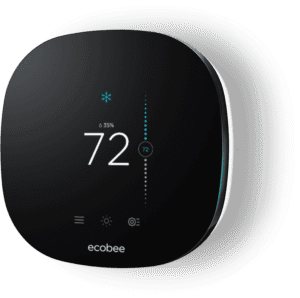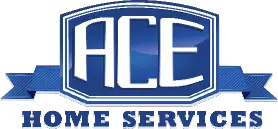This guide will explore the typical reasons your furnace fails, walk through steps to try yourself at home, look at when to request professional furnace repair service, and provide answers to frequent questions homeowners have about an underperforming HVAC system.
Why Has My Furnace Stopped Blowing Hot Air?
When your furnace suddenly stops blowing hot air into your home, it often comes down to a few common issues that you may be able to troubleshoot yourself before calling for professional HVAC service. Trying some basic do-it-yourself fixes can get your heating system up and running again while saving you money and frustration.
3 Common Causes of a Furnace Not Working Properly
While furnaces can stop operating for complicated reasons, home owners should check a few usual suspects first behind a lack of hot blowing air:
- Electrical problems causing a loss of power
- Blocked air vents and ducts restricting airflow
- Improperly configured thermostat settings
Checking these issues takes little time upfront and could solve your no heat situation straight away.
Checking Electrical Connections and Power
One of the simplest explanations why your furnace fan and heat won’t activate is a disruption of electrical power. Issues like a tripped breaker or blown fuse can easily be reset and restored quickly. Just remember to exercise safety first when working with electricity and electrical panels.
Start by locating the main circuit breaker or fuse powering your furnace unit. Most furnaces will be wired to a dedicated breaker on its own to prevent overload issues. Check if the switch has been tripped into the Off position and flip back On after confirming no shorts. Also examine the physical wiring connections to ensure they are intact and fully inserted into ports.
For older fuse style electrical panels, identify the correct fuse corresponding with furnace power and check for visible damage like a broken filament. Replace blown fuses accordingly based on amperage ratings. Just be careful when handling and only replace one fuse at a time to prevent issues.
Loss of electricity preventing ignition is one of the most preventable causes of a furnace failure. Get power restored first before tackling other potential failure points behind a non-working HVAC system.
Removing Vent and Air Filter Obstructions
For your furnace to heat up air and circulate it properly around your home, airflow cannot be blocked or restricted from unit intake to floor and ceiling vents. Start by walking through your house and confirming register vents and cold air returns are fully open without blockage. Opening closed doors can help normalize air pressure differences preventing good circulation room to room.
You also need to slide out and examine the condition of air filters protecting the blower fan motor and evaporator coils inside your furnace. Excessively dirty clogged filters lead to restricted airflow, higher strain on internal components, and eventual failure over time. Replace disposable filters as needed or clean re-usable varieties ensuring unimpeded airflow.
Taking steps to remove ductwork obstructions both inside and externally correcting ventilation issues can get everything flowing correctly again. Air needs to freely move through the full system path enabling proper functionality.
Adjusting Thermostat Settings Properly
While it may seem basic, one of the most common reasons your furnace fails to ignite or blow heated air on demand is an improperly configured thermostat. To maintain a comfortable climate automatically, the thermostat controls require specific programming to accurately call for heating or cooling based on home temperatures.
Here are a few key things to validate on your programmable or smart WiFi-enabled thermostat:
- System Mode – Set to “Heat” and “Auto” for heating functionality
- Temperature – Adjust to your desired temp higher than current reading
- Fan Setting – On “Auto” allowing auto fan cycling
- Power – Check batteries or wiring as applicable
Ensuring the thermostat settings align with proper operating parameters enables it to automatically request heating performance from your furnace when environmental conditions in the home call for it.
Faulty thermostats or incorrect programming are preventable problems behind no furnace ignition. Take the time to understand your climate control equipment programming when issues arise.
When Professional is Needed for Furnace Repairs
While many furnace operation failures come down to electrical, ventilation, or setting issues that homeowners can tackle themselves, not all no heat situations can be addressed simply. If your furnace fails to ignite, burn, or supply warmed air flow after checking the common self-fixes, then it is likely facing mechanical or installation issues requiring professional assessment and repairs.
Here are examples of furnace system problems best dealt with by qualified HVAC specialists:
- Faulty Control Boards – Circuit failures requiring electronics testing and replacement
- Blower Fan Motor Defects – Electrical or mechanical issues prevent fan spinning
- Sensor and Switch Malfunctions – Refuse system ignition or shutdown mid-operation
- Heat Exchanger Cracks – Allow dangerous exhaust gas leakage into ductwork
- Gas Leaks – Critical safety issue with fire risk potential
Dealing with the intricacies of furnace systems directly risks complication, personal harm, or further breakdowns. The complexity of fixes depends on your furnace type, fuel source, circuitry, ductwork, and installation specifics. Trust an expert service technician to handle anything more advanced than basic troubleshooting steps.
FAQ: Common Furnace Problems Explained
For homeowners struggling with furnace operation issues, you likely have lots of questions about why your unit fails and how to get performance back on track. Here are answers to a few frequently asked queries around typical repairs:
Why does my furnace keep shutting off randomly?
Frequent random shutdowns likely mean the high limit sensor is tripping unnecessarily. This safety mechanism toggles the furnace off to prevent overheating. The causes could range from low refrigerant levels, dirty filters, motor faults, ventilation issues, or sensor damage.
What should I do if the furnace is blowing cold air sometimes?
Intermittent cold air or uneven heating from specific vents usually indicates a more serious failure of the heat exchanger. Cracks or holes in this internal component allow air flow without it passing over the heated coils. Have your furnace inspected by a technician immediately since this represents a critical safety issue.
Why is there a burning plastic smell coming from my vents?
Odd smells from your ductwork often occur when dust builds up on internal electrical components, causing overheating and slight melting. This could signify failing part issues. Make sure filters fit properly and are changed regularly. Also have an HVAC company inspect all blower motor, sensor, and heating element connections.
How can I improve efficiency of my older furnace?
For maximized energy efficient operation on aging furnaces, ensure ductwork is well-sealed without leaks or holes allowing heat loss. Also replace disposable filters monthly or clean reusable ones regularly. Finally, have a technician perform seasonal maintenance checks and tune-ups to keep everything adjusted and calibrated properly.
What maintenance can I do myself?
Homeownerscan handle small maintenance themselves like inspecting and changing air filters monthly, vacuuming intake vents externally 1-2 times per year, ensuring unobstructed airflow to all ductwork/registers, cleaning debris around external HVAC units, and checking condition of thermostat batteries as applicable. Anything internal should be left to professionals.
Trusted Local Experts For Furnace Repair and Installation
For over 20 years, ACE Home Services has specialized in providing HVAC system solutions to residences across the Phoenix metropolitan area. Their qualified technicians have seen all varieties of failures and can correctly diagnose issues with your specific furnace model to restore heating operation quickly. No project too small or large.
Rather than sitting frustrated in an under-heated house trying to pinpoint problems on your own, trust professionals intimately familiar with local climate impacts and all brands of heating equipment. Save yourself the headache and potential risk – contact ACE today to schedule affordable diagnostic and repair services tailor-made to get your furnace blowing hot air again as dependably as possible.


